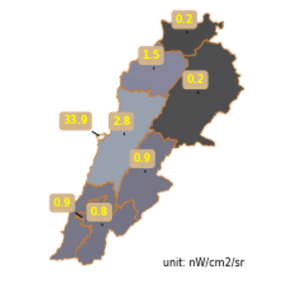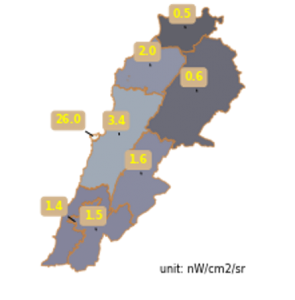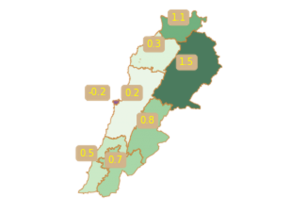The electricity sector in Lebanon is notoriously dysfunctional, suffering from supply shortages for decades. Peak demand is 1.5 gigawatts (GW) or 219.78 megawatts (MW) per million inhabitants, higher than generation capacity.1 In comparison, the power deficit in India, where over 1 billion people live, was 1.2 GW in 2019/2020, or 0.9 MW per million inhabitants.2
What’s causing Lebanon’s power and economic crises?
- High (and inequitable) direct costs. Lebanese households and businesses rely on subscription-based access from private Diesel generator operators during outages. This means that even though official tariffs are low, prices end up higher per kWh due to the bills paid to private operators. The severity of outages varies significantly by region, which contributes to high costs as well. In 2015, Beirut had on average 21 hours of electricity per day, but areas farther away from the capital receive less, with an average of 12 hours per day in the South or Bekaa, and as a result, have higher private generator bills. The inequality in electricity consumption can be measured using the satellite VIIRS Nighttime Light (VNL) data. Figure 1 shows the average VNL by region in 2012 and 2020 respectively, showing the stark inequality in electricity consumption between the capital region of Beirut (33.9 VNL in 2012 and 26 VNL in 2020) and the rest of the country. Figure 2 shows the change in average VNL between 2012 and 2020 by region. The current economic and energy crisis is most evident in the decrease in average VNL in Beirut in 2020 relative to 2012.
- Economic and environmental costs. Private generator bills are only the direct costs. There are the common indirect costs of electricity outages, such as the disruption of economic activity (for example, Allcott et al. (2016) look at their impact on industry in India) or increased air pollution (my work here).
- Struggling utility. The state electricity company, Electricité du Liban (EDL), is a loss-making utility. High production costs (predominantly fossil fuels), artificially low prices, and rampant electricity theft means it sells electricity at a loss. Since 1992, EDL has accumulated $40 billion of debt or around 43% of government debt, which the government is paying from Lebanese depositors’ money.
Lebanon’s electricity sector and the current economic crises are intertwined. The failing EDL has contributed significantly over decades to the high government debt, but since Lebanon relies primarily on fossil fuels for power, the financial crisis means that the government can no longer afford to import nor subsidize fuel, resulting in an energy crisis where power outages have worsened and fuel shortages translated into long car queues at petrol stations. In summer 2021, the power system collapsed, the country plunged into darkness, and the army had to intervene by providing fuel.
How can Lebanon disentangle these dual crises?
It is technically easy to solve EDL’s supply problems by adding the 1.5 GW of capacity required for supply to keep up with demand (the last addition to generation capacity was in 1999). The real issue however lies in the political system.3 Across the whole electricity supply chain, there are vested interests of almost all political actors in Lebanon, especially in the current energy mix, which is mostly fossil fuels, causing opposition to potential sustainable solutions such as renewable energy. The Lebanese government needs more policy tools beyond technology that account for the political economy of the power sector. In order to achieve a sustainable solution free of political interference, an independent regulator with the goal of ensuring good governance is a must.
The government has resorted to a short-term solution by making gas and electricity purchase agreements with Egypt and Jordan. However, these types of solutions are not sustainable. The Lebanese electricity sector requires serious reform away from political interventions and better governance. There is great potential for renewable energy in Lebanon like wind and solar, but without better governance, none of this is possible.
FIGURE 1: Average VNL in 2012 vs 2022


FIGURE 2: Relative change in average VNL from 2012-2020

Endnotes
- Failure to Power: The Need for Decentralized Renewable Energy Models, Jessica Obeid, CSIS, March 18, 2021.
- Power Sector At A Glance, ALL India.
- Lebanon: The 3-Decade Impossible Power Sector Reforms, Jessica Obeid, ISPI, March 13, 2020.
